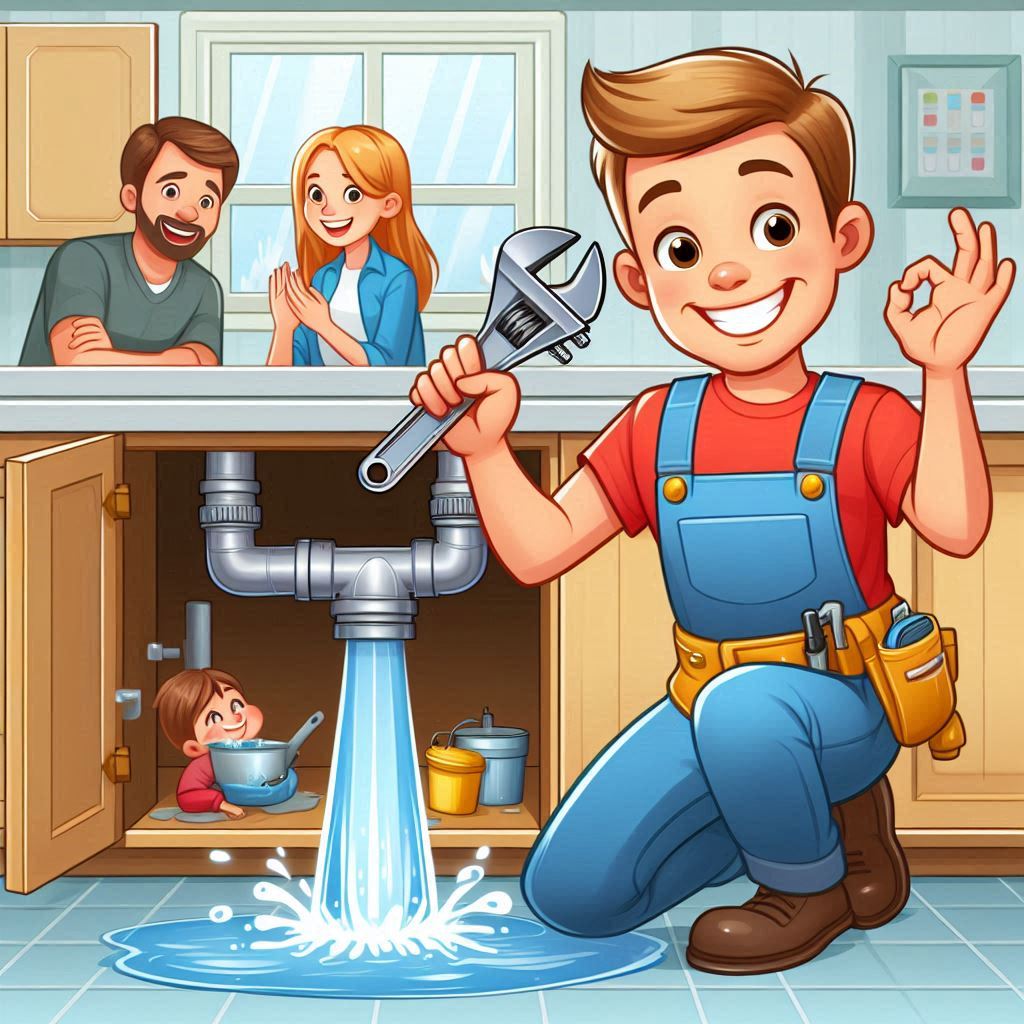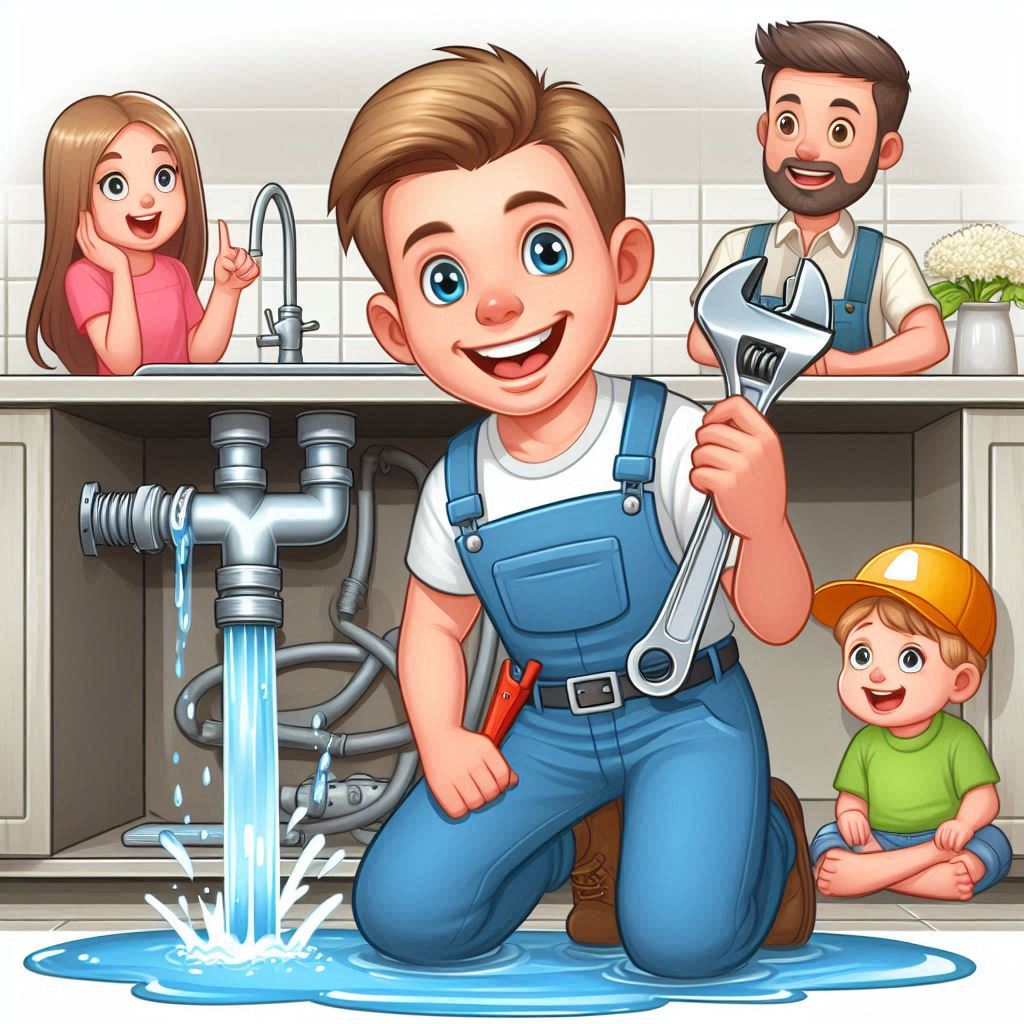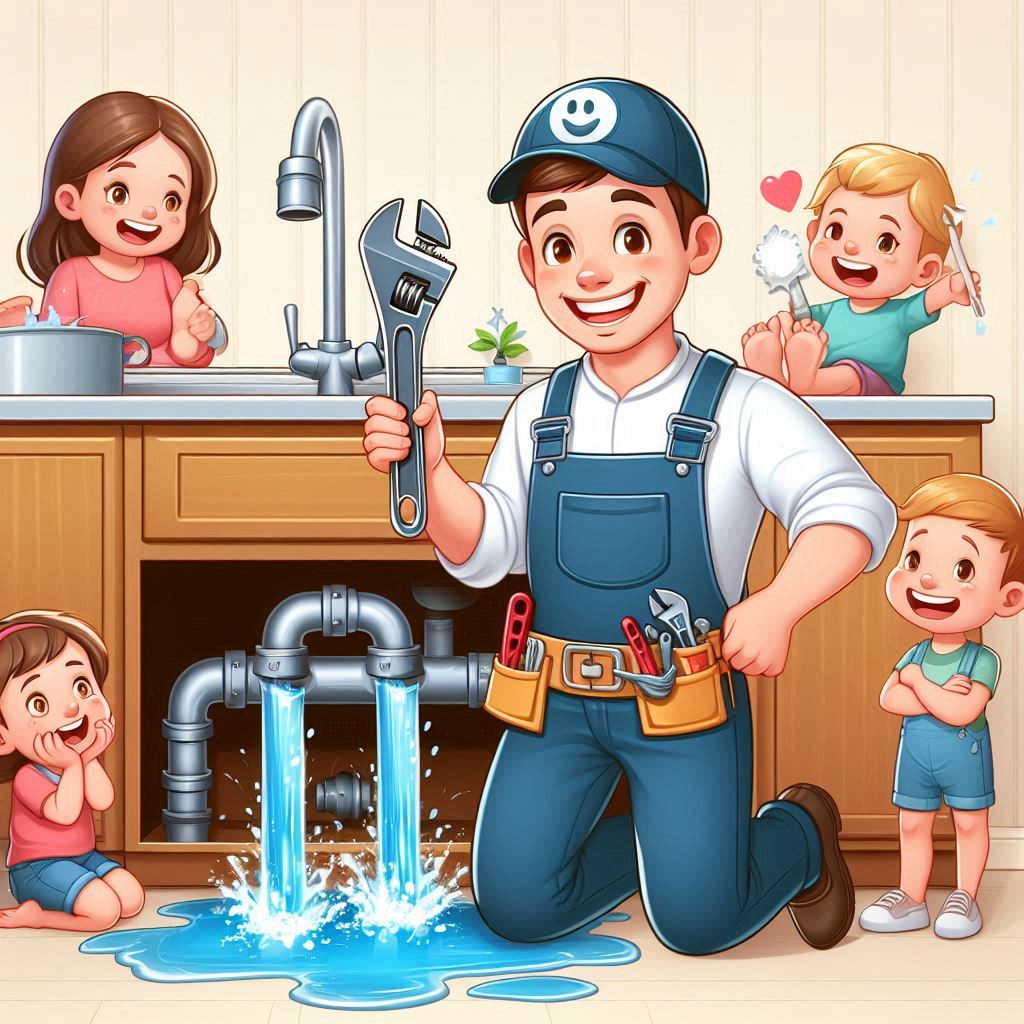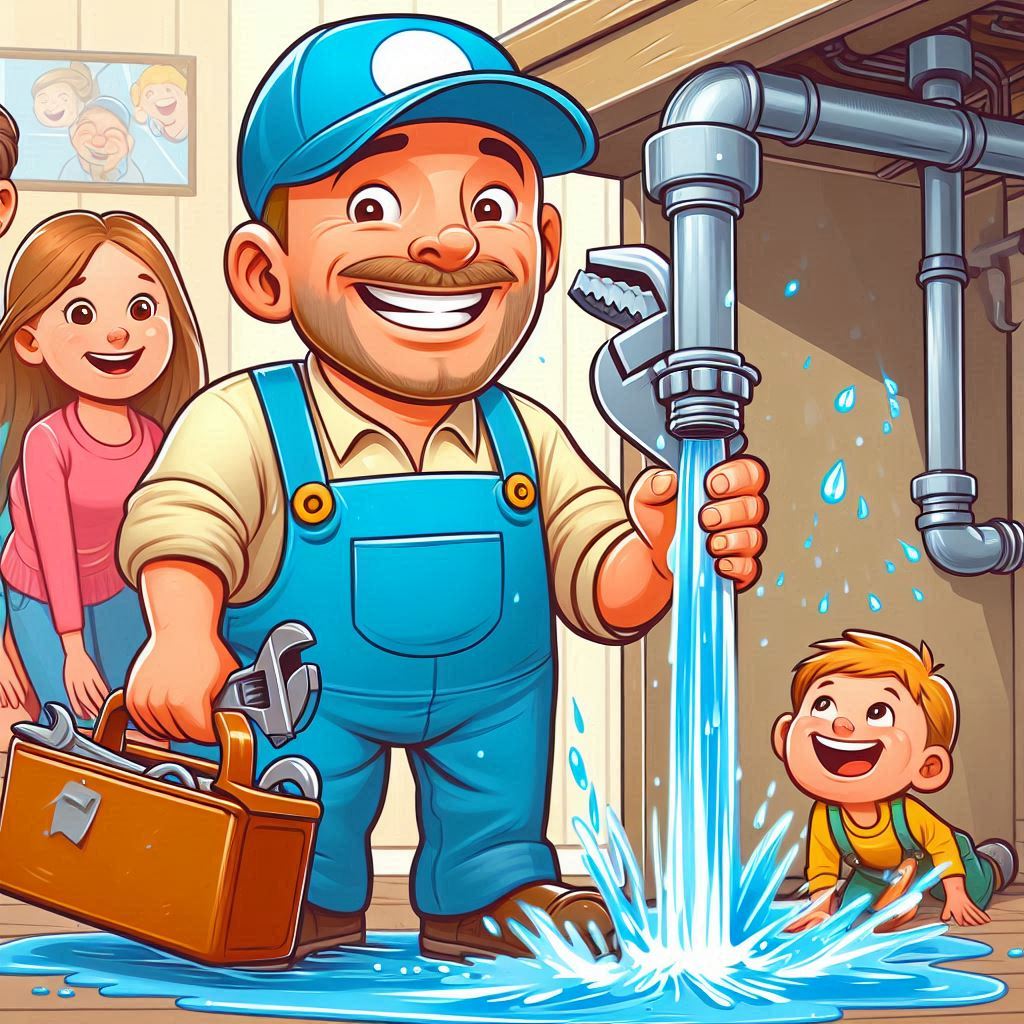Water Leak Coverage: A Must-Have for Homeowners

Table of Contents
Introduction
A Drip Can Lead to a Flood: Understanding Water Leak Insurance

Watehttps://featurefilm.online/security-mutual-insurance-history/r damage is more common than you might think. Whether it’s a slow, persistent leak or a sudden burst pipe, water can wreak havoc on your home, leading to costly repairs and potential health hazards. In fact, water damage is one of the leading causes of homeowner insurance claims, with an average claim cost of thousands of dollars.
Given the prevalence and financial impact of wahttps://www.quora.com/ter leaks, it’s crucial for homeowners to understand their insurance coverage. Not all water damage is created equal, and your policy might cover some types of leaks while excluding others. Knowing what’s covered can save you from a financial flood if the unexpected happens.
In this guide, we’ll dive into the different types of water damage, explore the nuances of water leak insurance, and help you determine if your home is adequately protected.
Body
Water Leaks: The Silent Destroyers

Water leaks can manifest in various ways, each with the potential to cause significant damage to your home. Understanding these types is crucial for determining the appropriate insurance coverage:
- Sudden and Accidental Leaks: These are the dramatic events that often come to mind when we think of water damage. A burst pipe in the dead of winter, a malfunctioning washing machine overflowing, or a sudden rainstorm overwhelming your gutters – these leaks can cause extensive damage in a short amount of time.
- Gradual Leaks: These are the stealthy culprits, often lurking behind walls or under floors. A slow leak from a plumbing fixture, a leaky roof that drips unnoticed, or a deteriorating water heater – these leaks can cause significant damage over time, leading to mold growth, structural issues, and costly repairs.
- Sewer Backups and Overflows: While not technically leaks in the traditional sense, sewer backups and overflows can introduce contaminated water into your home, posing serious health risks. These events are often caused by blockages in the sewer line or heavy rainfall overwhelming the system.
- Flooding: Whether caused by natural disasters like hurricanes or heavy rainfall, flooding can inundate your home with water, leading to catastrophic damage. Even a few inches of water can ruin flooring, drywall, and belongings, and create a breeding ground for mold and bacteria.
Water Leaks
By focusing on the term “water leaks,” we encompass all these different types of water damage. This allows homeowners to understand the broader scope of potential risks and the importance of having adequate insurance coverage to protect their homes from both sudden and gradual water damage. It also highlights the need to consider additional coverage like flood insurance, depending on the specific risks associated with your location.
Standard Home Insurance: What It Covers (and What It Doesn’t) When It Comes to Water Leaks
Your standard homeowners insurance policy typically offers coverage for specific water-related incidents, but there are important limitations and exclusions to be aware of:
What’s Typically Covered:
- Sudden and Accidental Water Damage from Internal Sources: This includes damage caused by burst pipes, overflowing appliances (like a water heater or washing machine), or accidental discharges from plumbing systems. These events are usually considered sudden and accidental, making them eligible for coverage under most standard policies.
- Limited Coverage for Water Damage from Appliances: Some policies may offer limited coverage for water damage caused by appliances, depending on the specific circumstances and the type of appliance involved. It’s essential to review your policy’s terms and exclusions to understand the extent of coverage for appliance-related water damage.
What’s Typically NOT Covered:
- Gradual Leaks: Slow leaks that develop over time, such as leaky roofs, dripping faucets, or deteriorating pipes, are often excluded from standard coverage. These leaks are considered maintenance issues that homeowners are responsible for addressing.
- Sewer Backups and Overflows: Most standard policies do not cover damage caused by sewer backups or overflows. This is because these events are often preventable through proper maintenance and are not considered sudden or accidental.
- Flooding: Damage caused by floods, whether due to natural disasters or other sources, is typically excluded from standard homeowners insurance. Flood insurance is a separate policy that must be purchased through the National Flood Insurance Program or private insurers.
Water Leaks
By emphasizing “Water Leaks,” we highlight the importance of understanding the specific types of water damage covered (and not covered) by standard home insurance policies. This helps homeowners identify potential gaps in their coverage and make informed decisions about additional insurance options, such as sewer backup coverage or flood insurance, to ensure comprehensive protection for their homes.
Additional Coverage Options (Riders/Endorsements):
Don’t Get Caught High and Dry: Additional Coverage Options for Water Leaks
While standard home insurance offers some protection against water damage, it’s important to consider additional coverage options to fully safeguard your home from the various types of water leaks:
- Sewer Backup Coverage: This valuable endorsement covers damage caused by sewer backups and overflows. It typically covers the cost of cleaning up sewage, repairing or replacing damaged property, and even additional living expenses if your home becomes uninhabitable.
- Flood Insurance: Flooding is not covered by standard homeowners insurance. If your home is located in a flood-prone area, purchasing flood insurance is highly recommended. This separate policy will protect your home and belongings from the devastating effects of floodwaters.
- Specific Endorsements for Gradual Leaks or Appliance Malfunctions: Some insurance companies offer endorsements (also known as riders) that extend coverage to include gradual leaks or specific appliance malfunctions. These endorsements can be a valuable addition to your policy, especially if you have older plumbing or appliances that are more prone to leaks.
Water Leaks
By highlighting “Water Leaks,” we emphasize the importance of not relying solely on standard home insurance for complete protection. We encourage homeowners to explore these additional coverage options to address the specific water leak risks they face. This proactive approach to insurance ensures that your home and belongings are safeguarded from all types of water damage, giving you peace of mind and financial security.
Understanding Your Policy’s Exclusions and Limitations:
Water Leaks: Navigating the Fine Print of Your Insurance Policy
Understanding the exclusions and limitations of your insurance policy is crucial when it comes to water leak coverage. Here are some key points to keep in mind:
- Maintenance-Related Leaks: Most insurance policies exclude coverage for water damage caused by a lack of maintenance or gradual wear and tear. This includes leaks from aging pipes, deteriorating roofs, or neglected appliances. It’s your responsibility as a homeowner to keep your property in good repair and address minor leaks promptly.
- Water Damage Due to Negligence: If water damage occurs due to your negligence or failure to take reasonable precautions, your insurance claim may be denied. For example, if you leave a window open during a heavy rainstorm and your home floods, your insurer might argue that the damage was preventable.
- Specific Dollar Limits for Coverage: Insurance policies often have specific dollar limits for different types of water damage. For instance, there might be a limit on coverage for water damage from a burst pipe versus a leaking roof. Be sure to review your policy to understand these limits and ensure they are adequate for your needs.
- Deductibles and How They Apply: Your insurance policy likely has a deductible, which is the amount you must pay out of pocket before your insurance coverage kicks in. Deductibles can vary depending on your policy and the type of water damage. It’s important to factor in the deductible when assessing your overall risk and potential financial burden in the event of a water leak.
Water Leaks
By emphasizing “Water Leaks” in this section, we highlight the importance of carefully reading and understanding the terms of your insurance policy regarding water damage coverage. This includes knowing what’s excluded, the limits on coverage, and how deductibles apply. Armed with this knowledge, you can make informed decisions about your insurance coverage and take steps to minimize your risk of water leaks and subsequent financial losses.
Steps to Take If You Have a Water Leak
Water Leaks: Acting Fast to Minimize Damage and Maximize Insurance Coverage
If you discover a water leak in your home, taking swift and decisive action can help mitigate damage and ensure a smoother insurance claims process:
- Stop the Leak If Possible: If it’s a minor leak from a visible source, such as a dripping faucet or a loose pipe connection, try to stop the flow of water as best as you can. Turn off the water supply to the affected area or, if necessary, the main water valve to your home. This can help prevent further damage while you wait for professional help.
- Document the Damage: Before you start cleaning up or making repairs, take photos and videos of the affected areas. This documentation will be crucial when filing an insurance claim. Be sure to capture the extent of the damage, including water stains, warped materials, and any damaged belongings.
- Contact Your Insurance Provider Immediately: Notify your insurance company as soon as possible about the water leak. They can guide you through the claims process and advise you on the next steps. Be prepared to provide details about the leak, the extent of the damage, and any steps you’ve taken to mitigate further loss.
- Mitigate Further Damage: While waiting for your insurance adjuster, take reasonable steps to prevent further damage. This might include removing standing water with a wet/dry vacuum, mopping up excess moisture, and using fans to circulate air and promote drying. Be sure to document these efforts as well, as they can demonstrate your proactive approach to minimizing the loss.
Water Leaks

By emphasizing “Water Leaks” in this section, we highlight the importance of acting quickly and decisively in the face of water damage. Prompt action can help prevent further damage, preserve evidence for your insurance claim, and ultimately minimize your financial loss. By following these steps, you can navigate the water leak situation more effectively and ensure a smoother recovery process.
Tips for Preventing Water Damage:
Water Leaks: Prevention is the Best Insurance
While having the right insurance coverage is essential, proactive prevention measures can save you the hassle and heartache of dealing with water damage in the first place:
- Regular Maintenance and Inspections: Regular inspections of your plumbing system, roof, and appliances can help identify potential leaks before they become major problems. Check for signs of corrosion, leaks, or damage, and address any issues promptly. Consider scheduling annual inspections by professionals to ensure your home is in good condition.
- Insulate Pipes to Prevent Freezing: In colder climates, frozen pipes are a common cause of water leaks. Insulate exposed pipes in unheated areas like attics, basements, and crawl spaces to prevent them from freezing and bursting. During extremely cold weather, allow a small trickle of water to run through faucets to keep the pipes warm and prevent freezing.
- Install Leak Detection Devices: Leak detection devices are available that can alert you to leaks as soon as they occur, giving you a chance to address the issue before it escalates. These devices can monitor water flow, pressure, and moisture levels in your home, providing early warnings of potential leaks.
Water Leaks
By emphasizing “Water Leaks” in this section, we highlight the importance of preventative measures in mitigating the risk of water damage. Regular maintenance, insulation, and leak detection devices can help homeowners catch leaks early and prevent them from turning into costly and disruptive disasters. Remember, prevention is not only the best insurance, it’s also the most cost-effective way to protect your home from water leaks.
Conclusion
Water Leaks: Don’t Let Them Sink Your Finances
Water leaks can be a homeowner’s nightmare, causing extensive damage and financial strain. While standard home insurance policies typically cover sudden and accidental leaks from internal sources, they often exclude coverage for gradual leaks, sewer backups, and floods.
Understanding your policy’s exclusions and limitations is crucial. Review your coverage carefully and talk to your insurance agent about additional options like sewer backup coverage, flood insurance, or endorsements for gradual leaks and appliance malfunctions. These extra layers of protection can provide peace of mind and financial security in case of unexpected water damage.
Remember, prevention is key. Regular maintenance, inspections, and the use of leak detection devices can help you avoid costly water damage in the first place.
By being proactive and informed, you can safeguard your home from water leaks and ensure that you’re not left high and dry when disaster strikes.
Water Leaks
By emphasizing “Water Leaks” throughout this conclusion, we reinforce the importance of understanding this specific risk and taking the necessary steps to protect your home. This final reminder encourages homeowners to prioritize water leak prevention and insurance, ensuring their investment is secure against the potentially devastating effects of water damage.
Call to Action
Water Leaks: Don’t Wait Until It’s Too Late!
Ready to protect your home from the unexpected? Don’t let a water leak catch you off guard. Take action now to ensure your home is adequately protected from the devastating effects of water damage.
Find the Right Insurance:
Explore reputable insurance providers specializing in homeowner’s insurance and water damage coverage. Research options for supplemental coverage like flood insurance or endorsements for specific leak types. Get quotes from multiple providers to compare rates and coverage options.
Assess Your Risk:
Download our free Water Leak Risk Assessment Checklist to identify potential vulnerabilities in your home. This comprehensive guide will help you assess your risk level and determine the most suitable coverage for your specific needs.
Protect Your Investment:
By understanding your current insurance coverage, exploring additional options, and taking proactive measures to prevent water leaks, you can safeguard your home from costly damage and ensure peace of mind.
Remember: Water leaks can happen to anyone, at any time. Don’t wait for disaster to strike – take action today to protect your home and your investment.
Water Leaks
By using the focus keyword “water leaks” in the call to action, we emphasize the urgency of addressing this specific risk. It motivates readers to take immediate action by directing them to resources for finding insurance providers and offering a practical tool to assess their individual needs. This targeted approach empowers homeowners to make informed decisions about their insurance coverage and take proactive steps to prevent water leaks before they become major problems.
FAQs
- What types of insurance does my café need?
Your café needs a combination of insurance policies to cover all aspects of the business. This includes property insurance, general liability insurance, workers’ compensation insurance, business interruption insurance, and possibly others like liquor liability or cyber liability insurance, depending on your specific operations.
- Why is it important to insure my café’s bean supply?
Your coffee beans are the foundation of your business. Insuring them protects you from financial loss due to theft, damage during transit, or supply chain disruptions.
- What happens if my coffee machine breaks down?
Equipment breakdown insurance covers the cost of repairing or replacing essential equipment like coffee machines, grinders, and refrigerators.
- Do I need to insure my baristas?
Yes, workers’ compensation insurance is a legal requirement in most states and protects your employees in case of work-related injuries or illnesses.
- How can I protect my café’s brand reputation?
Product liability and cyber liability insurance can protect your café’s brand reputation by covering claims related to food safety issues, negative online reviews, or data breaches.
- Is flood insurance necessary for my café?
If your café is located in a flood-prone area, flood insurance is essential to protect your property and assets from water damage.
- How can I find the right insurance for my café?
Consult with an insurance agent who specializes in business insurance for cafés. They can assess your specific needs and recommend the right policies to protect your business from bean to brew.




